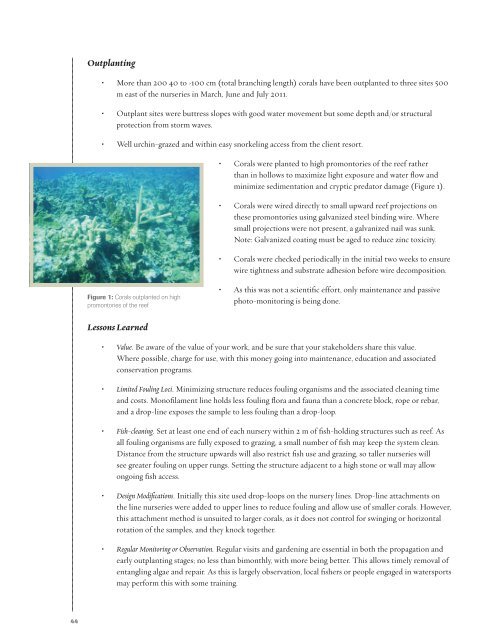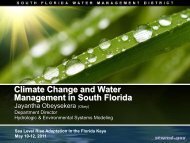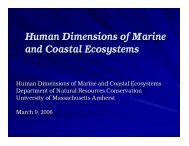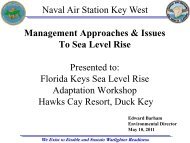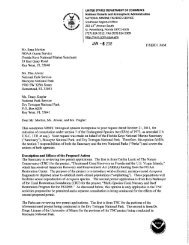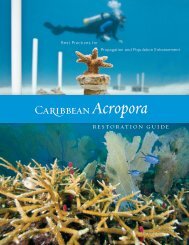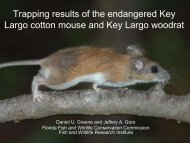Caribbean Acropora Restoration Guide - The Florida Reef ...
Caribbean Acropora Restoration Guide - The Florida Reef ...
Caribbean Acropora Restoration Guide - The Florida Reef ...
You also want an ePaper? Increase the reach of your titles
YUMPU automatically turns print PDFs into web optimized ePapers that Google loves.
Outplanting<br />
• More than 200 40 to ›100 cm (total branching length) corals have been outplanted to three sites 500<br />
m east of the nurseries in March, June and July 2011.<br />
• Outplant sites were buttress slopes with good water movement but some depth and/or structural<br />
protection from storm waves.<br />
• Well urchin-grazed and within easy snorkeling access from the client resort.<br />
• Corals were planted to high promontories of the reef rather<br />
than in hollows to maximize light exposure and water flow and<br />
minimize sedimentation and cryptic predator damage (Figure 1).<br />
• Corals were wired directly to small upward reef projections on<br />
these promontories using galvanized steel binding wire. Where<br />
small projections were not present, a galvanized nail was sunk.<br />
Note: Galvanized coating must be aged to reduce zinc toxicity.<br />
• Corals were checked periodically in the initial two weeks to ensure<br />
wire tightness and substrate adhesion before wire decomposition.<br />
Figure 1: Corals outplanted on high<br />
promontories of the reef<br />
• As this was not a scientific effort, only maintenance and passive<br />
photo-monitoring is being done.<br />
Lessons Learned<br />
• Value. Be aware of the value of your work, and be sure that your stakeholders share this value.<br />
Where possible, charge for use, with this money going into maintenance, education and associated<br />
conservation programs.<br />
• Limited Fouling Loci. Minimizing structure reduces fouling organisms and the associated cleaning time<br />
and costs. Monofilament line holds less fouling flora and fauna than a concrete block, rope or rebar,<br />
and a drop-line exposes the sample to less fouling than a drop-loop.<br />
• Fish-cleaning. Set at least one end of each nursery within 2 m of fish-holding structures such as reef. As<br />
all fouling organisms are fully exposed to grazing, a small number of fish may keep the system clean.<br />
Distance from the structure upwards will also restrict fish use and grazing, so taller nurseries will<br />
see greater fouling on upper rungs. Setting the structure adjacent to a high stone or wall may allow<br />
ongoing fish access.<br />
• Design Modifications. Initially this site used drop-loops on the nursery lines. Drop-line attachments on<br />
the line nurseries were added to upper lines to reduce fouling and allow use of smaller corals. However,<br />
this attachment method is unsuited to larger corals, as it does not control for swinging or horizontal<br />
rotation of the samples, and they knock together.<br />
• Regular Monitoring or Observation. Regular visits and gardening are essential in both the propagation and<br />
early outplanting stages; no less than bimonthly, with more being better. This allows timely removal of<br />
entangling algae and repair. As this is largely observation, local fishers or people engaged in watersports<br />
may perform this with some training.<br />
44


